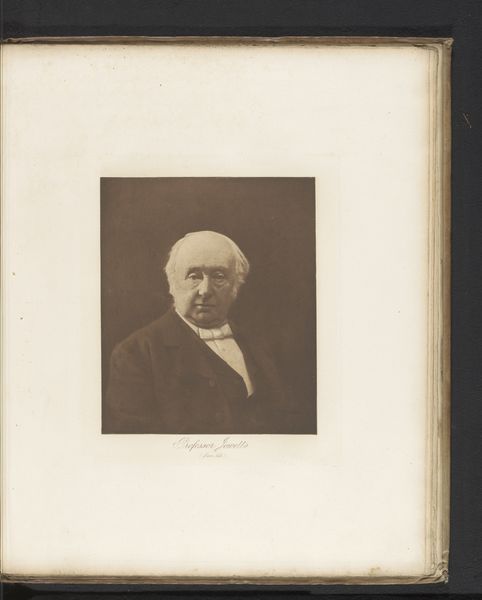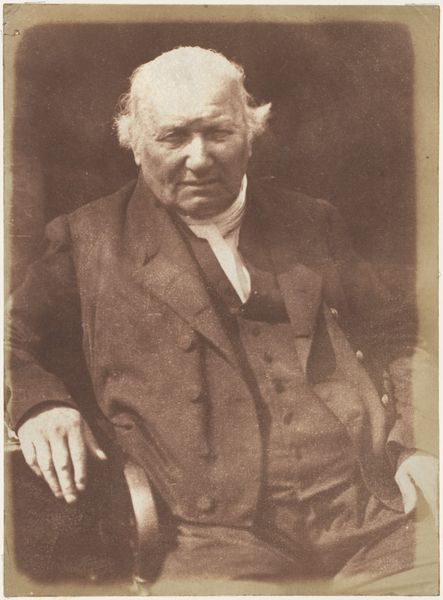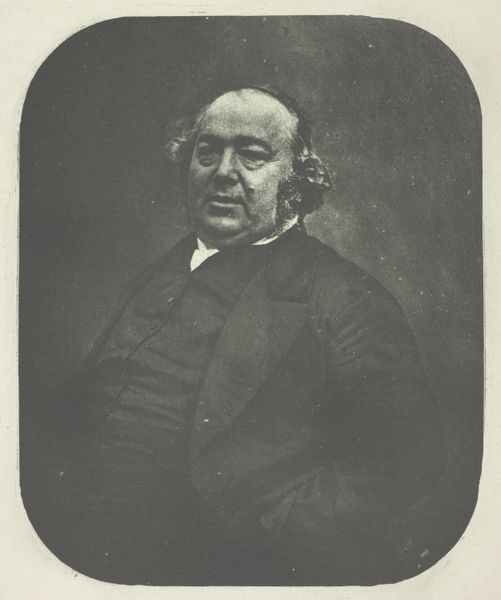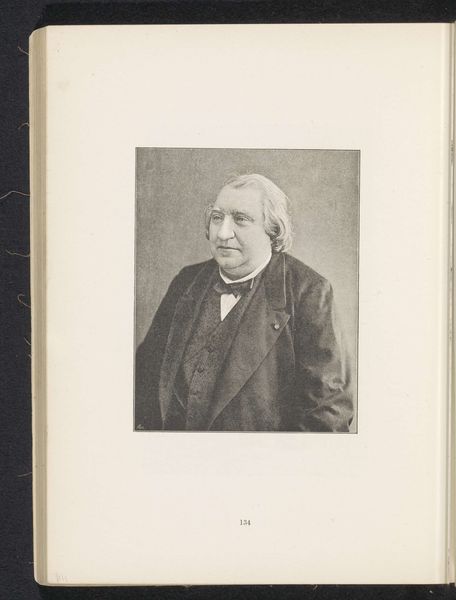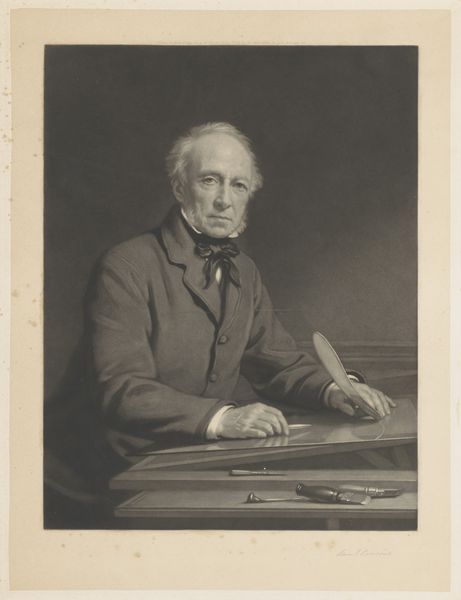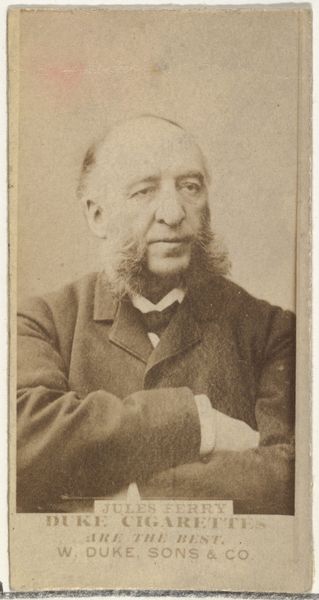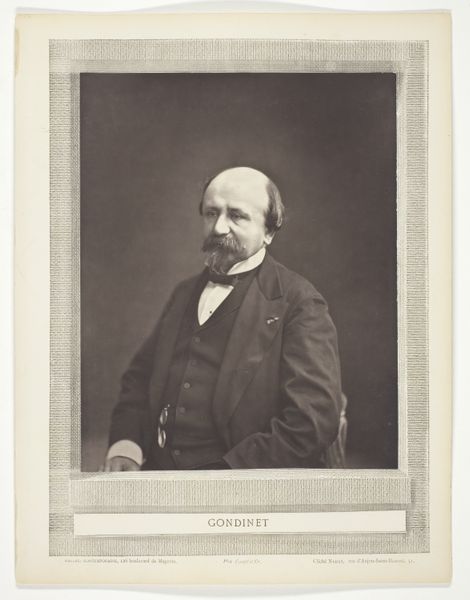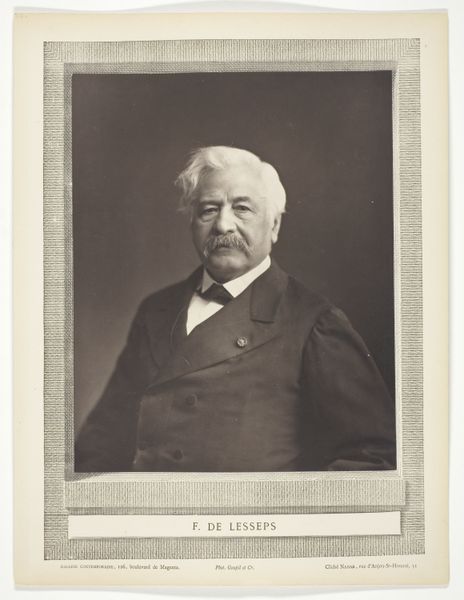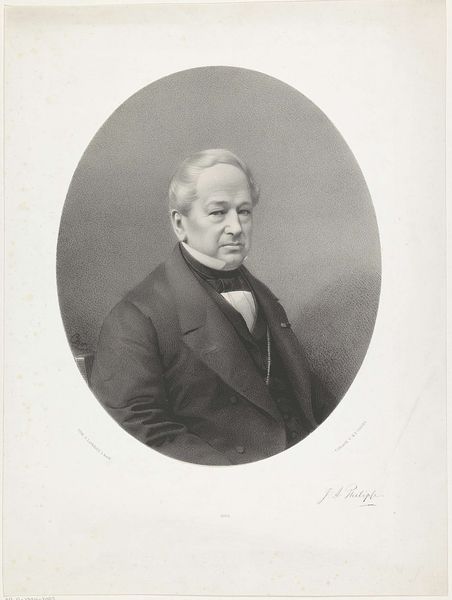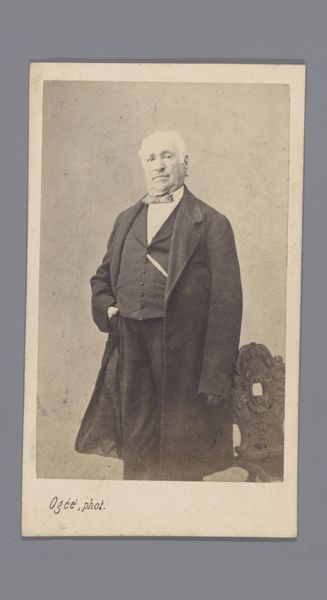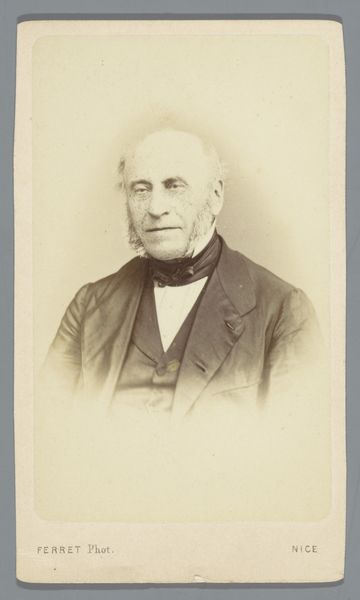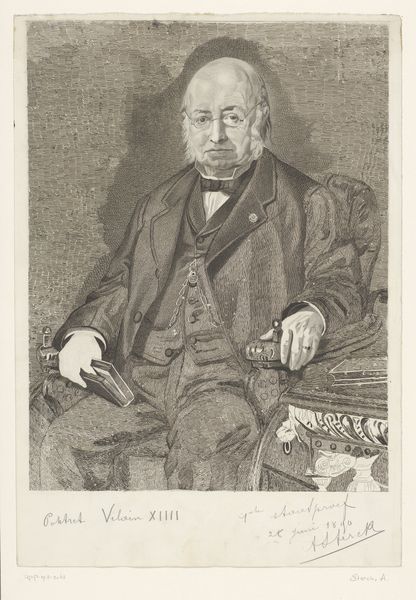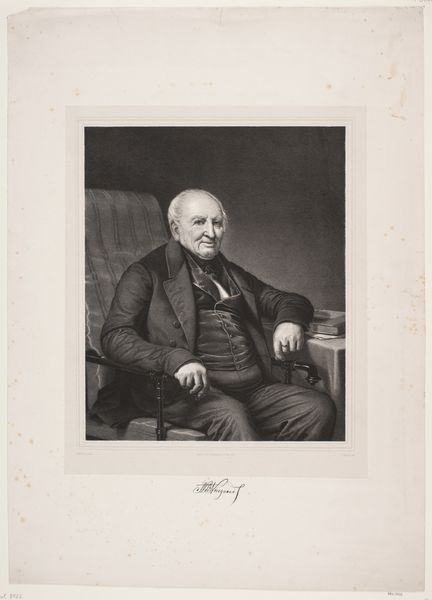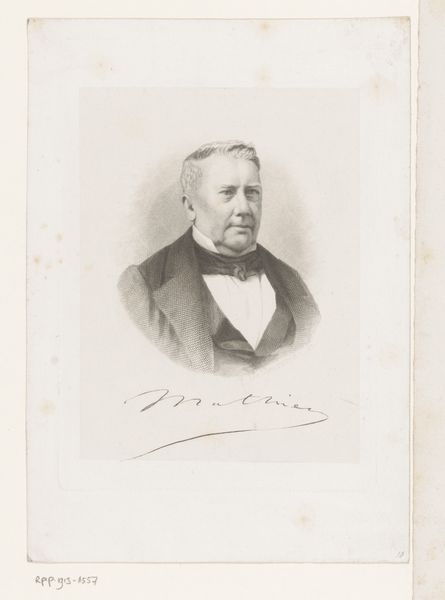
The Very Reverend Dr. Jowett (Master of Balliol, Oxford) c. 1865 - 1893
0:00
0:00
Dimensions: 21.9 × 18.3 cm (image); 45.1 × 37 cm (album page)
Copyright: Public Domain
Curator: This photographic portrait, dating from sometime between 1865 and 1893, depicts The Very Reverend Dr. Jowett, the Master of Balliol College, Oxford. It’s the work of Julia Margaret Cameron. Editor: Immediately, the mood is striking—a softness that almost feels like it's blurring the edges of time. The deep shadows give it a very intimate feel, drawing me right in to look at this man’s face. Curator: Cameron was fascinated by the chemistry of photography, frequently embracing imperfections like blurs or smudges to assert the photographer's artistic presence in a process too often relegated to mere replication. Editor: Indeed. The focus here seems more on revealing character than achieving technical perfection. We can analyze how the soft focus, juxtaposed with the sharp detail around the eyes, speaks volumes about the burden and privilege of knowledge in a Victorian man—especially of this stature. Curator: Her process involved coating glass plates with light-sensitive collodion, exposing them while still wet, and then developing them immediately. The challenges of this technique certainly shaped the aesthetic we see here. Each photograph was inherently unique. We should recognize this as painstaking and laborious, in contrast to our automated approaches to photography now. Editor: Precisely! Let’s think about access. Photography at the time wasn’t just documenting reality; it was largely documenting wealth, status, and, frankly, whiteness. Consider the very limited access Dr. Jowett granted the average person. Who had the economic means to sit for a portrait and how that limits perspective even within art itself? It is quite provocative to note this and consider it against, say, his accomplishments as a translator and scholar. Curator: And the consumption. We should reflect upon Cameron’s upper-class connections enabling access to figures like Jowett. It’s through these connections she can secure patronage but is also participating in elevating him within social spheres. Editor: Well said. It makes me contemplate whose stories we elevate through the art we choose to preserve and study, and how crucial it is to ensure we are bringing other perspectives forward. Curator: Absolutely, thinking through material access also gives a critical view on our understanding of what art history represents. Editor: The complexities around a single image, aren't they extraordinary? Thank you, I will be contemplating on all this.
Comments
No comments
Be the first to comment and join the conversation on the ultimate creative platform.
